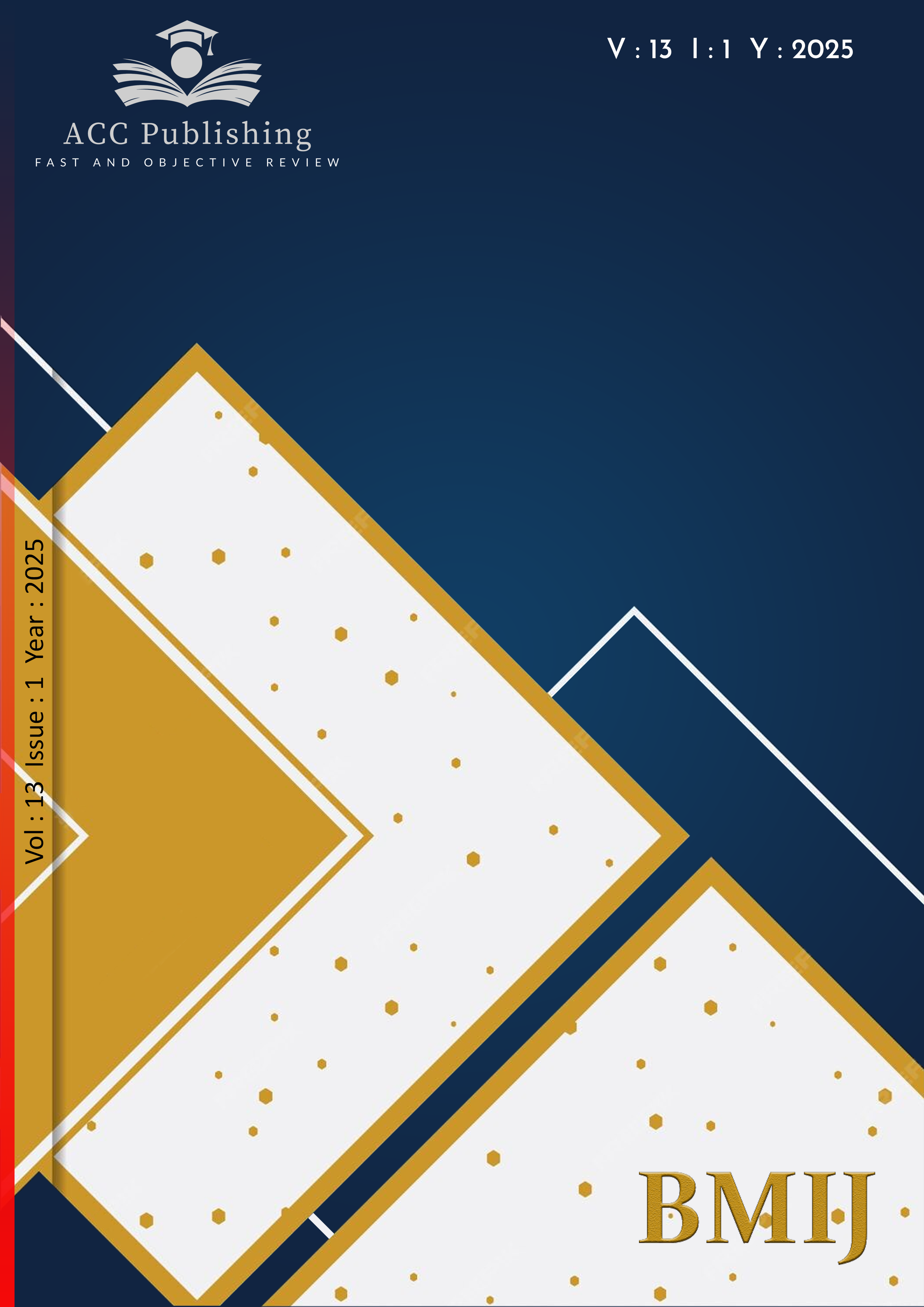Destinasyon marka değerinin destinasyon güveni ve tekrar ziyaret niyeti üzerine etkisi: Ziyaret sıklığının moderatör rolü

Yayınlanmış 25.03.2025
Anahtar Kelimeler
- Destination Brand Equity, Destination Trust, Revisit Intention, Visit Frequency
- Destinasyon Marka Değeri, Destinasyon Güveni, Tekrar Ziyaret Niyeti, Ziyaret Sıklığı
Nasıl Atıf Yapılır
Telif Hakkı (c) 2025 Emel Celep

Bu çalışma Creative Commons Attribution-NonCommercial-NoDerivatives 4.0 International License ile lisanslanmıştır.
Nasıl Atıf Yapılır
Öz
Bu araştırmanın amacı, destinasyon marka değeri bileşeninin destinasyon güveni ve tekrar ziyaret niyeti üzerindeki etkisi ile destinasyon marka değerinin destinasyon güveni ve tekrar ziyaret niyeti üzerindeki etkisinde ziyaret sıklığının moderatör rolünün belirlenmeye çalışılmasıdır. Araştırma, önemli bir yerli ve yabancı turizm hareketliliği ve potansiyeline sahip bulunan Antalya ili, Manavgat, Side destinasyonunda gerçekleştirilmiştir. Araştırmanın örneklemini, Side destinasyonunu en az bir veya daha fazla ziyaret eden yabancı turistler oluşturmaktadır. Bu kapsamda, Side destinasyonunu ziyaret eden 391 yabancı turistle anket veri toplama tekniği kullanılarak bir araştırma gerçekleştirilmiştir. Elde edilen verilere yapısal eşitlik modellemesi aracılığı ile doğrulayıcı faktör analizi ve yol analizi uygulanmıştır. Araştırma sonucu elde edilen bulgulara göre; destinasyon marka değerinin destinasyon güveni üzerinde anlamlı bir etkisinin bulunduğu, destinasyon güveninin tekrar ziyaret niyeti üzerinde anlamlı bir etkisinin bulunduğu, destinasyon marka değerinin tekrar ziyaret niyeti üzerinde anlamlı bir etkisinin bulunduğu, destinasyon güveninin tekrar ziyaret niyeti üzerindeki etkisinde ziyaret sıklığının moderatör rolünün bulunduğu, destinasyon marka değerinin tekrar ziyaret niyeti üzerindeki etkisinde ziyaret sıklığının moderatör rolünün bulunduğu tespit edilmiştir.
Referanslar
- Aaker, D. A. (1996). Building strong brands. New York: Free Press.
- Aaker, D. A. (1991). Managing brand equity. The Free Press: New York, NY, USA.
- Abubakar A. M. & Ilkan, M. (2016). Impact of online wom on destination trust and intention to travel: A medical tourism perspective. Journal of Destination Marketing & Management, 5(3): 192-201.
- Abubakar, A. M. (2016). Does eWOM influence destination trust and travel intention: A medical tourism perspective. Economic Research-Ekonomska Istraživanja, 29(1), 598-611. Doi: 10.1080/1331677X.2016.1189841
- Anderson, J. C., & Gerbing, D. W., (1988). Structural equation modeling in practice: A review and recommended two-step approach. Psychological Bulletin, 103 (3), 411–423.
- Anggraeni, V. & Astini, R. (2020). The influence of motivation, destination image & destination trust which had an impact on millennials' visit decision to The National Museum. Saudi Journal of Business and Management Studies, 5(10), 506-511. Doi: 10.36348/sjbms.2020.v05i10.001
- Artigas, E. M., Yrigoyen, C. C., Moraga, E. T. & Villalón, C. B. (2017). Determinants of trust towards tourist destinations. Journal of Destination Marketing & Management 6,(2017), 327-334. Doi: 10.1016/j.jdmm.2017.03.003
- Baldinger, A. L. (1932). Defining and applying the brand equity concept: Why the researcher should care. Journal of Advertising Research, 30, RC2–RC5.
- Boo, S. Busser, J. & Baloglu, S. (2009). A Model of Customer-based brand equity and ıts application to multiple destinations. Tourism Management, 30(2), 219-231. doi: 10.1002/jtr.2093.
- Cervova, L. & Pavlu, K. (2018). Customer-based brand equity of a tourism destination: An empirical study of the Liberec Region. Journal of Interdisciplinary Research, 8 (2), 32-36. Doi:10.33543/08023236
- Chekalina, T., Fuchs, M. & Lexhagen, M. (2014). A value co-creation perspective on Customer-based brand equity model for tourism destinations - A case from Sweden. Matkailututkimus, 10(1), 8-24.
- Chekalina, T., Fuchs, M. & Lexhagen, M. (2018). Customer-based destination brand equity modeling: The role of destination. Journal of Travel Research, 57 (1), 31-51. Doi: 10.1177/0047287516680774
- Chigora, F., Ndlovu, J. & Nyagadza, B. (2024). Building positive Zimbabwean tourism festival, event and destination brand image and equity: A systematic literature review, Cogent Social Sciences, 10(1), 2318867, 1-18. Doi: 10.1080/23311886.2024.2318867
- Chin, W. W. (1998). The partial least squares approach to structural equation modeling. In George A. Macrolides (Ed.), Modern methods for business research (pp. 295-336). Mahwah, NJ: Lawrence Erlbaum Associates.
- Dahiya, A., Kumar, R., & Sangeeta (2022). Developing and validating a model of tourism brand equity. Atna-Journal of Tourism Studies, 17(1), 61-89. Doi: 10.12727/ajts.27.3
- Dewi, P. R. A., Sukaatmadja, I. P. G & Giantari, I. G. A. K. (2024). The role of destination image mediates the influence of tourist experience and service quality on revisit intention (Study on domestic tourists Tanah Lot tourism destination areas). European Journal of Business and Management Research, 9(1), 21-30. Doi:10.24018/ejbmr.2024.9.1.2076
- Endah, P. E., Umar, N., Suharyono & Andriani, K. (2017). Study on destination image, satisfaction, trust and behavioral intention. RJOAS, 1(61), 148-159. Doi: 10.18551/rjoas.2017-01.15
- Esmaeilzadeh, S., Delafrooz, N., Soleimani, A. G. & Hashjin, N. M. (2022). Develop a scale to measure tourists' trust in a tourist. Tourism Management Studies, 17(57), 303-331.Doi: 10.22054/tms.2021.62555.2588
- Farquhar, P. H. (1989). Managing brand equity. Marketing Research, 1, 24-33.
- Frichilia Asiku, W., Hermawan, A. & Shinta Dewi, T. (2020). The influence of image destination on revisit intention and word of mouth trough tourist satisfaction (Study on Tourism Pulo Love Eco Resort, Boalemo District). South East Asia Journal of Contemporary Business, Economics and Law, 23(1), 125-134.
- Hair, J. F., Money, A. H., Samouel, P. & Page, M. (2007). Research methods for business. Education + Training, 49(4), 336-337.
- Han, J. H., Kim, Y. & Jung, M. (2022). Exploring the roles of multidimensional versus unidimensional construct of destination social responsibility in explaining destination trust and relationship continuity. Global Business & Finance Review, 27(5), 83-99. Doi:10.17549/gbfr.2022.27.5.83
- Henseler, J., Ringle, C.M., & Sarstedt, M., (2015). A new criterion for assessing discriminant validity in variance-based structural equation modeling. Journal of Academic Marketing Science, 43, 115–135.
- Huddin, M. N., Kurnia, D., Deviyantoro, D. & Nafiudin, N. (2023). The relationship between customer experience, customer satisfaction, customer trust, and customer loyalty in tourism destination. Diponegoro International Journal of Business, 6(2), 142-154. Doi:10.14710/dijb.6.2.2023.142-154
- Im, H. H., Kim, S. S., Elliot, S. & Han, H. (2012). Conceptualizing destination brand equity dimensions from a consumer-based brand equity perspective. Journal of Travel & Tourism Marketing, 29(4), 385-403. Doi: 10.1080/10548408.2012.674884
- Indiani, N. L. P., Rahyuda I. K., Yasa, N. N. K. & Sukaatmadja, I. P. G. (2015). Perceived risk and trust as major determinants of actual purchase, transcending the influence of intention. Asean Marketing Journal, VII(1), 1-13.
- Jebbouri, A., Zhang, H., Imran, Z., Iqbal, J. & Bouchiba, N. (2022). Impact of destination image formation on tourist trust: Mediating role of tourist satisfaction. Frontiers in Psychology, 13, 845538. Doi: 10.3389/fpsyg.2022.845538
- Julyastini, N. K. D., Setiawan, P. Y., Giantari I. G. A. K. & Wardana, I. M. (2024). Tourist experience and risk perception on revisit intention: Mediate of destination image. World Journal of Advanced Research and Reviews, 23(01), 2638-2649. Doi:10.30574/wjarr.2024.23.1.2218
- Jusak, U., Umar, N., Suharyono & Andriani, K. (2018). Measuring the revisit intention using city branding concept. RJOAS, 5(77), 219-228. Doi:10.18551/rjoas.2018-05.27
- Kang, S. J. (2001). Research on the influence factors on brand equity. Marketing Science Research, 8, 1-35.
- Kazemi, M., Hesam, M., Rad, M. S. & Cheraghi, M. (2018). The evaluation of tourism destination brand equity from the female tourist's perspectives (Study Of 16 Cities in Iran). GeoJournal of Tourism and Geosites, 1(21), 112-122.
- Keller, K. L. (1993). Conceptualizing, measuring, and managing customer-based brand equity. Journal of Marketing, 57, 1-22
- Khuong, M. N. & Hanh, N. H. (2016). Factors affecting band equity of online travel booking service in Ho Chi Minh city-a mediation analysis of e-word of mouth. Journal of Economics, Business and Management, 4 (4), 266-271. Doi: 10.18178/joebm.2016.4.4.402
- Kim, H.-K. & Lee, T. J. (2018). Brand equity of a tourist destination. Sustainability, 2018, 10, 431, 1-21. Doi:10.3390/su10020431 www.mdpi
- Kladou, S. & Kehagias, J. (2014). Assessing destination brand equity: An integrated approach. Journal of Destination Marketing & Management, 3(1), 2-10.
- Konecnik, M. (2005). Customer-based brand equity for tourism destination: Conceptual model and its empirical verification. (Published Ph.D. Dissertation, University of Ljubljana, Slovenia.
- Konecnik, M. & Gartner, W. C. (2007). Customer-Based Brand Equity for a Destination. Annals of Tourism Research, 4(2), 400-421. Doi:10.1016/ $0160-7383(97)80009-6 Liu
- Kotler, P. (1991). Principles of marketing. 5th edn. New Jersey: Prentice Hall, 442 p. ISBN: 0-13-262254-8.
- Konecnik, M. (2010). Extending the tourism destination image concept into customer-based brand equity for a tourism destination. Ekonomska Istraživanja, 23(3), 24-42.
- doi.org/10.1080/1331677X.2014.994274
- Kotler, P., & Keller, K. L. (2012). Marketing management. (14th ed.). Prentice-Hall International.
- Ladystia, A., Astuti, W., Lasaruddin, A. & Krisnanda, R. (2021). Revisit ıntention generation Z Indonesia: E-reservation, destination image and memorable tourism experiences of Tiga Warna Beach in Malang Regency. International Journal of Creative Research Thoughts (IJCRT), 9(1), 3567-3576.
- Li, W., Chen, G., Wu, L., Zeng, Y., Wei, J. & Liu, Y. (2022). Travel intention during the Covid-19 epidemic: The influence of institutional and interpersonal trust. Frontiers in Psychology, 13: 1015900. Doi: 10.3389/fpsyg.2022.1015900
- Liu, J., Wang, C., Fang, S. & Zhang (Christina), T. (2019). Scale development for tourist trust toward a tourism destination. Tourism Management Perspectives, 31, 383-397.
- Luvsandavaajav, O., Narantuya, G., Dalaibaatar, E. & Zoltan, R. (2022). A longitudinal study of destination image, tourist satisfaction, and revisit intention. Journal of Tourism and Services, 24(13), 128-149. Doi:10.29036/jots.v13i24.341
- MacLachlan, D. L. & Mulhern, M. G. (1991). Measuring brand equity with conjoint analysis. In Proceedings of the 4th Sawtooth Software Conference, Sun Valley, ID, USA, January 1991; pp. 127–140.
- Mafuta, L. M., Maingi, S. W. & Khayiya, R. (2022). Influencing role of cultural diversity on destination brand equity, Mombasa County, Kenya. African Journal of Hospitality, Tourism and Leisure, 11(1), 102-117. Doi:10.46222/ajhtl.19770720.214
- Mancı, A. R. (2022). Determining destination risk perceptions, their effects on satisfaction, revisit and recommendation intentions: Evidence from Sanliurfa/Turkey. Journal of Multidisciplinary Academic Tourism, 7(1): 81-96. Doi: 10.31822/jomat.2022-7-1-81
- Marinao, E., Chasco, C. & Torres, E. (2012). Trust in tourist destinations-the role of local inhabitants and institutions. Academia, Revista Latinoamericana de Administracion, 51, 27-47.
- Ministry of Culture and Tourism. 2022 Tourism Statistics. 2023. https://yigm.ktb.gov.tr/TR-9851/turizm-istatistikleri.html (accessed on 14 February 2023).
- Mok Kim Man, M. (2010). Developing a brand for the Sabah State in Malaysia: Empirical research among its tourists. e-Journal of American Academy of Business, Cambridge.
- Nam, J., Ekinci, Y. & Whyatt, G. (2011). Brand equity, brand loyalty and consumer satisfaction. Annals of Tourism Research, 38(3), 1009-1030. Doi: 10.1016/j.annals.2011.01.015
- Nasib, Syaifuddin & Rusiadi, (2023). Modeling the impact of tourism brand love and brand trust on increasing tourist revisit intention: An empirical study. Journal of System and Management Sciences, 13(4), 399-415. Doi:10.33168/JSMS.2023.0424
- Nur Setyaningsih, R. N. & Farida, N. (2019). The effect of destination image, memorable tourism experience with second order construct towards revisit intention: Study in Karimunjawa National Park. In Proceedings of the 2nd International Conference on Inclusive Business in the Changing World (ICIB 2019), 538-543. Doi: 10.5220/0008433405380543
- Phi, H. D., Ngo, T. Q., Phuong, T. H. T. & Linh, N. N. (2022). Effects of destination image on revisit intention: the intermediate role of satisfaction & Words of mouth (Empirical Evidence in Ho Chi Minh City, Vietnam). Studies of Applied Economics, 40(1), 1-15. Doi: 10.25115/eea.v40i1.5747
- Pike, S. (2007). Customer-based brand equity for destinations. Practical DMO performance measures. Journal of Travel and Tourism Marketing, 22(1), 51-56. doi.org/10.1080/10548408.2015.1063796
- Qadri, R. A. (2022). Word of mouth and quality services; their impact on destination trust and revisit intention on in the Riau Islands’ Destination. Journal of Business Studies and Management Review (JBSMR), 6(1), 64-69.
- Rahayu, S. & Hariadi, S. (2021). Brand equity of Banyuwangi as a Natural Tourism. Advances in Economics, Business and Management Research, 180, 175-180. (Proceedings of the 18th International Symposium on Management (INSYMA 2021)).
- Rismawati & Sitepu, E. S. (2021). The Influence of service quality, destination image, and memorable experience on revisit intention with intervening variables of tourist satisfaction. International Journal of Applied Sciences in Tourism and Events, 5(1), 77-87. Doi: 10.31940/ijaste.v5i1.2097
- Sidharta, I., Rahman, R. S. & Heryanto, I. (2017). Measuring dimension of brand equity in tour and travel in bandung, Indonesia. Advances in Economics, Business and Management Research (AEBMR), 41, 291-294. (4th Bandung Creative Movement International Conference on Creative Industries 2017 (BCM 2017).
- Simon, C. J. & Sullivan, M. W. (1993). The measurement and determinations of brand equity: A financial approach. Marketing Science, 12(1), 28-52. Doi:10.1287/mksc.12.1.28
- Siregar, M. R., Siregar, M. I., Saputra, J., Muzammil, A. & Muhammad, Z. (2021). The mediating role of service quality, tourists’ satisfaction and destination trust in the relationship between destination image and tourist revisiting intention. Journal of Environmental Management and Tourism, (Volume XII, Fall), 6(54): 1603-1616. Doi:10.14505/jemt.v12.6(54).16
- Stojanovic, I., Andreu, L. & Curras-Perez, R. (2018). Effects of the intensity of use of social media on brand equity. European Journal of Management and Business Economics, 27(1), 83-100. Doi:10.1108/EJMBE-11-2017-0049
- Su, L., Yang, Q., Swanson, S. R. & Chen, N. C. (2022). The impact of online reviews on destination trust and travel intention: The moderating role of online review trustworthiness. Journal of Vacation Marketing, 28(4), 406-423. Doi: 10.1177/13567667211063207
- Su, L., Yang, Q., Swanson, S. R. & Chen, N. C. (2021). The impact of online reviews on destination trust and travel intention: The moderating role of online review trustworthiness. Journal of Vacation Marketing, 28(4) 1-18. Doi:10.1177/13567667211063207
- Su, W.-S., Hsu, C.-C., Huang, C.-H. & Chang, L.-F. (2018). Setting Attributes and revisit intention as mediated by place attachment. Social Behavior And Personality, 46(12), 1967-1982. Doi: 10.2224/sbp.6861
- Suban, S. A. (2024). Visitor’s Emotional experience in predicting destination image, satisfaction and intention to revisit: A spa tourism perspective. International Hospitality Review, Emerald Publishing Limited, 2516-8142. Doi:10.1108/IHR-05-2023-0032
- Sukaatmadja, I. P. G., Yasa, N. N. K., Rahanatha, G. B., Rahmayanti, P. L. D., Santika, I. W. & Tirtayani, I. G. A. (2024). The role of spiritual destination image in mediating attachment to virtual tours and social media promotion on return visit intentions. International Journal of Data and Network Science, 8(2024), 1035-1046. Doi: 10.5267/j.ijdns.2023.12.004
- Tang, H., Wang, R., Jin, X. & Zhang, Z. (2022). The effects of motivation, destination image and satisfaction on rural tourism tourists’ willingness to revisit. Sustainability, 14, 11938. Doi:10.3390/su141911938
- Tong, X. & Hawley, J. M. (2009). Measuring customer-based brand equity: Empirical evidence from the sportswear market in China. Journal of Product & Brand Management, 18(4), 262-271. Doi: 10.1108/10610420910972783
- Tran, H. (2021). Effect of memorable tourism experiences on revisit intention to community-based tourism destination of domestic tourists in Vietnam. Proceedings of the International Conference on Research in Management & Technovation, 307-313. Doi:10.15439/2021KM44
- Trius, N. V., Agustina, N. K.W. & Yudhistira, P. G. A.(2023). The effect of travel experience, destination image, and destination trust on revisit intention at Ubud Monkey Forest. International Journal of Social Science and Business, 7(3), 680-689. Doi: 10.23887/ijssb.v7i3.50231
- Veríssimo, J. M. C., Borges Tiago, M. T., Gomes Tiago, F. & Jardim, J. S. (2017). Tourism destination brand dimensions: an exploratory approach. Tourism & Management Studies, 13(4), 1-8. Doi: 10.18089/tms.2017.13401.
- Viet, B. N., Dang, H. P. & Nguyen, H. H. (2020). Revisit intention and satisfaction: The role of destination image, perceived risk, and cultural contact. Cogent Business & Management, 7(1), 1796249, 1-20. Doi: 10.1080/23311975.2020.1796249
- Wani, A. Z., Bhatnagar, A. & Mir, M. A. (2023). The impact of e-service quality on e-loyalty and revisit intention through the mediating role of e-satisfaction and e-trust. African Journal of Hospitality, Tourism and Leisure, 12(2), 555-573. Doi:10.46222/ajhtl.19770720.385
- Wei, J., Zhou L. & Li, L. (2024). A study on the impact of tourism destination image and local attachment on the revisit ıntention: The moderating effect of perceived risk. PLoS ONE, 19(1), 1-19. Doi:10.1371/journal.pone.0296524
- Wibawa, D. P., Yanto, Y. & Zulkarnain, A. (2025). How destination image and trust mediate e-wom's impact on halal tourism intentions. Jurnal Ekonomi & Keuangan Islam, 11(1), 29-46. Doi: 10.20885/JEKI.vol11.iss1.art3
- Yamane, T. (1967). Problems to accompany "Statistics, an introductory analysis". Harper & Row: New York, USA
- Yang, K. (2022). The effect of destination trust on tourists’ travel intention after the Covid-19. Proceedings of the 9th International Conference on Hospitality and Tourism Management, 7(1), 65-78
- Yoo, B., Donthu, N. & Lee, S. (2000). An examination of selected marketing mix elements and brand equity. Journal of the Academy of Marketing Science, 28(2), 195-211.
- Yousaf, A. & Amin, I. (2017). Can customer based brand equity help destinations to stay in race? An empirical study of kashmir valley. Tourism and Hospitality Management, 23(2), 251-266. Doi: 10.20867/thm.23.2.4
- Zhang, H., Wu, Y. & Buhalis, D. (2017). A Model of perceived image, memorable tourism experiences and revisit ıntention. Journal of Destination Marketing & Management, 8(2018), 326-336. Doi: 10.1016/j.jdmm.2017.06.004



